The roses are soil (they are sharpening) conventionally included in a separate group of low-spirited shrub plants. The main features of the roses of this group are the tendency of growth is not so much in height as on the parties and abundant bloom throughout the vegetative period. But some varieties can reach a height of more than two meters. To select the right grade and cultivate on the site near the house, you should explore the information set out in the article.
Advantages of griming roses
All soil roses come from the Asian progenitor - Rosa Rugosa Rubra wrinkled rose, which agreed in Korea, Japan, in the northeastern part of China and in the south of Siberia. By selection, combining some varieties of small quenching soil roses, it was possible to withdraw the popular Nozomi and Sea Foam. Later, Bionica 82, Fairy and Fiona appeared, later - a whole family of drift varieties.
All these roses differ, undoubtedly, beauty, but at the same time, and a number of characteristic advantages, including:
- unpretentious;
- resistance to various diseases and pests;
- frost resistance;
- ability to accelerated vegetation and rooting;
- the ability to resist weeds.
Cutting roses are not required to cut every year, which allows you to create a dense flowing carpet coating in a short time.
Roses, sharpening on the ground: Classification
Soil roses can be divided into subgroups, depending on the height of the bushes:
- low (up to half meter) bushes with shoots that are making on Earth (Snow Carpet, Avon);
- drooping the middle height of the bushes (from half a meter to 90 cm), for example - Ice Meillandecor;
- high (up to 1 m), sharpen on Earth, such as MAX GRAF;
- high (from 1 m or more) deploying, with escapes of the arcuate form (Fiona);
- prospecting to growing side and height (Fru Dagmar Hastrup).
The sharpening varieties are distinguished by the fact that their stems grow along the surface of the soil and are often rooted by nodes. Determining are bushes, whose arcoid branches are leaning towards Earth.
Rose roses (photo and description): Best varieties
All varieties of roses are difficult to list: their great set. Gardeners are often preferred to make a choice of bouton color.
Rose Pretty - Pink Buds
These include Mirato grade. Bushes with round flowers of dark pink color, covered by buds completely immediately after the start of flowering. In the center of the bud, you can see the stamens of golden color.
The same family belongs to Kniprs. These are low sharpening fine-flowered soil roses with bright pink bunsticks contrasting against the background of green foliage.
This is a variety of low-grade nonachhrovaya soil roses with a prolonged period of flowering: from the end of spring to late autumn.
Rose Even - Red, White and Yellow Buds
A group representative is a rose of Kent variety: small, slightly velvet buds, exude a light fragrance.
Red colors fascinating Rose Red Leonardo. Middle-size buds are distinguished by the abundance of terry petals.
Rose sprinkled for the middle strip of Russia
Choosing roses for landing in the middle lane of Russia, gardeners are recommended to be guided by the requirements of their resistance to climate features and aesthetics. The grade Fairy corresponds to this: its buds are striking by beauty, and at the same time this shrub is the best resistance to the peculiarities of weather conditions, to pests and diseases. It is also worth noting a variety feature: later the beginning of flowering (in July) continues until the occurrence of cold weather.
From roses from red, the GartnerFreudee should be noted, relatively recently created variety. Small terry buds with raspberry-red tint, although they do not have a bright aroma, but resistant to precipitation. Their petals do not appear even under heavy rain.
Yellow roses recently bred by breeders can be represented by a variety of Nadia Meillandecor. It adapts well to the soil, and to the peculiarities of the terrain and climate. Buds are pleasantly smelled, differ in pomp and a gentle shade of yellow.
Roses with orange boutons are not so often. As an example, you can specify Aprot Clementine. The transfusion of the color gamut from orange to gently pink will not leave anyone indifferent. The variety is characterized by resistant to diseases and precipitation: the petals are well kept in the bud and do not fall.
Separately, it is worth mentioning roses with abundant bloom. In this regard, Excelsa varieties are deserved - fast-growing bushes with raspberry-red booths. The variety is well withstanding frost.
Another variety - New Down, does not apply to frost-resistant, but it is well rooted on the shaded areas with a depleted soil. Pink-pearly inflorescences will not leave anyone indifferent.
Roses are sharpened: landing and care rules
At the stage of breeding ground roses, it is important to comply with the following rules:
- For the convenience of further leaving plants between individual bushes and groups, it is necessary to leave a sufficient distance so that it is possible to cut and fertilize the roses freely. At the same time, the individual features of each variety are taken into account: the spreadsiness of the branches, their height, growth intensity.
- The wells for planting seedlings are preparing in advance (at least two weeks). In the spring, the holes for the autumn planting and the opposite - in the fall for planting in the spring.
- The seedling packed in the container is carefully removed from it, and the rhizer is shortened to 35 cm. Do it in order to stimulate the development of the root system, since during transportation often the tips of the roots break. If there is no need to violate the earth, it makes several shallow (up to 2 cm) of cuts.
- In the event that the root rose system is not covered with soil and is already cut, you should additionally shorten its roots a few millimeters. To revive the filled roots, you need to withstand them in water during the day before placing for landing in the well.
Important: A seedling suitable for planting should be at least three strong shoots and a developed root system with a variety of small processes.
Before the spring landing, the shoots need to trim, leaving 2-3 kidneys in strong seedlings, and in the weak - 1-2. The shoots are allowed not to trim, but root processes should be shortened to stimulate their growth.
It is necessary to plant roses in the autumn period no later than mid-October, otherwise the bushes do not fit and freeze.
Landing in the ground rose with a dropsy dry way: the main stages
- At the prepared area, mark up for bushes. In the reserved places make a deepening about half a meter (depends on the length of the roots) and the same width. Separate holes are allowed to replace the trenches when landed the bushes.
- After the container from the container, it is necessary to remove the protective shell, release the earthen com.
- A bush of soil rose after trimming the root is placed in a hole. The roots spread the book and close the ground mixture consisting of soil and humus (in equal amounts). The eyepication should be in-depth to the ground by 4-5 cm. The landing site is moisturized, while the ground is soaked. The action is performed in several steps to achieve soil homogeneity.
- A bush should be permanent and covered with a snack for 10 days so that the straight rays of the sun have created unfavorable conditions for the adaptation of the rose. The hyphenation should be saved until the new escape will reach a height of 5 cm. After that, the excess ground is cleaned, and the landing site is murdered.
Recommendation: Soil mixture for planting sprinkled roses should consist of two parts of garden soil, one part of the turf, sand, weathered clay, peat, humus with the addition of a glass of superphosphate and two glasses of ash and bone flour.
Sequence of actions with wet landing roses
- In the prepared recess, 2-3 buckets of water are poured, into which humate sodium is added in advance.
- The seedling is lowered into the hole and, holding him for the top of the escape, fall asleep his roots of the landing ground mixture. At the same time, the bush slightly shakes the roots completely covered with a mixture.
- The seedlock is dipped to a height of 20 cm and covered with a sweetheart. After growing new shoots, the ground under the bush is aligned and mulched. Mulch layer - up to 7 cm (used compost, peat).
CARE FOR SAPER ROSE VOLUING IN THE first-year after landing
In the first summer, the seedlings displaced from the container on the household plot must be fed, to inject the ground from the root. This is especially important if the land has not been enriched before planting griming roses.
Preparation for winter involves feeding with a mixture prepared in the proportion of 25 g of superphosphate and 20 g of potassium sulphate per 1 m² of the site. Watering young seedlings more often than adult plants - in the morning, no less than once a week. Water will be required at the rate of about 10 liters on the bush, and it should not be cold. Watering bushes from the middle of the summer should not. It is important to remember: excess moisture will not benefit soil roses.
For proper formation of bushes, shoots from the root cervical cutting to the ring to stimulate their branching. Buds after their wilt remove.
How to perform crop roses
Trimming the grudging bushes of griming roses is performed according to the middle or in a weak way, when only 7-10 kidneys should remain on the branch. Make it in the spring, which is necessary to rejuvenate the bush.
All dry and damaged branches are subject to complete trimming (to base), as well as shoots that germinate to the center and old (3-4 years old). Once every 5 years, the rose trimming is performed according to the average option - it cuts off all the branches, leaving up to 10 kidneys from the base of the branches. At the same time, there is a conviction that the sharpening roses of cropping is not necessary if the formation of buds continues on the old wood.
Diseases of griming roses and methods of treatment
There are varieties of roses resistant to diseases, but over time and they can be amazed. The reason is that the diseases are mutated, adapt to external conditions. The main diseases of roses should be distinguished to be able to deal with them.
- Puffy dew (fungal disease). Manifested in the form of a white plaque on young shoots, foliage and buds. In these places there is a deformation of the plant. The prevention of mildew is calcium in the soil, a decrease in the dose of nitrogen fertilizers and timely watering. Treatment is performed by spraying "Topaz", "Fundazole", "Tijite Jet" and "Cleales".
- Rust Rose. In the spring it becomes noticeable on the stems of orange dust - spores of the fungal disease. In the summer, the spores are formed, capable of spreading to neighboring plants. As a result, roses decreases photosynthesis and metabolism. Winter spiones are formed at the end of summer and look like black pads round shape. The affected leaves are yellow and die away. The treatment is to circumcise the affected shoots and spraying with burgundy liquid. The soil loose and hide the mulch - it reduces the likelihood of rust spread.
- Black spotty (Marsonina): The causative agent is a mushroom. From mid-July, black spots appear on the leaves, as a result of which the leaves die away. They suffer from this and stems of young shoots. Black spot is usually developed in the shade, in the absence of air movement. Treatment and prevention is cleaning the affected foliage (it should be burned), spraying with copper vigorous and systemic fungicides ("Sorrow).
- Bacterial cancer: manifests itself in the form of growths on roots and root cake. The growths differ in size and decompose in the soil. Sometimes a lesion of the above-ground part of the barrel in the form of tumors is noticeable. The cause of the disease is an excessive breaker, surplus alkali in the ground and excess moisture. Affected plants are subject to destruction. Roses roots, which can still be saved, after circumcision of cancer tumors before planting is rinsed with 1% solution of copper sulfate, and then water.
- Burn burn: Initially, reddish spots are formed on the branches, which are subsequently darker. Affected plants dry closer towards the end of summer. One of the reasons for the occurrence of the disease is an excessive moisture in the roots. Treatment and prevention is the same as in the case of rust: trimming and spraying with copper vigor.
Order of seasonal feeding of pop roses
- April: The bushes after trimming are fed by an ammonium nitrate dissolved in water (a tablespoon on the bucket). A few days later - by half a manure for each plant.
- May: Undercaming, missed in April, can be performed using mineral granular fertilizers. After feeding the soil you want to explode. Binding fertilizers is improved after watering. Effective fertilizer also serves a cow manure or chicken litter.
- June: After the start of flowering, the bush is introduced with organic fertilizers, a mixture of ash with a cow.
- July: Apply fertilizers in the form of a mixture of ash, potash nitrate and trace elements.
- August: With a break for a week, the bushes are consistently fed by organic fertilizers, then - potash-phosphate and at the end - fertilizers based on potassium sulfate. You can add microfertres and ashes.
- September: Watering is not produced, roses are fed by Kalimagnezia before wintering.
It is better to deal with this will help the video with a specialist comments.
Roses are the best choice for decorating the household site. The decorative qualities of this type of roses will not leave anyone indifferent, and the care of roses will not require considerable costs of funds and time.

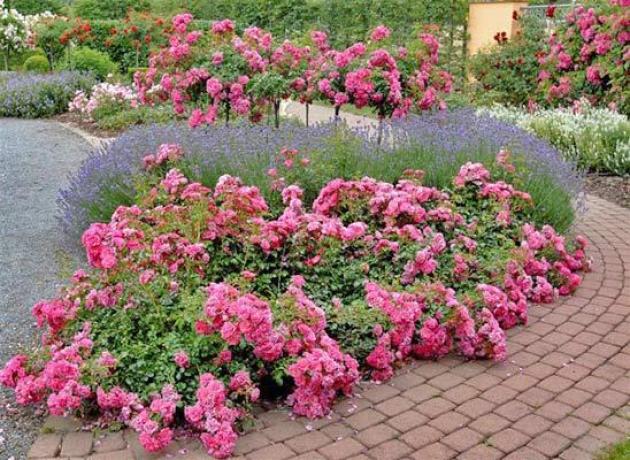

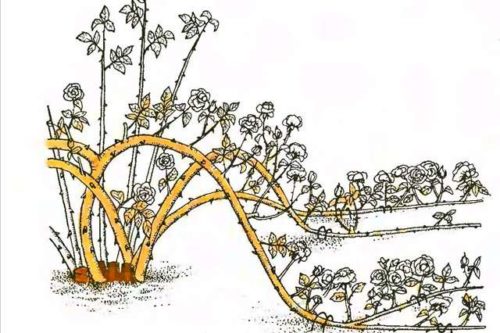
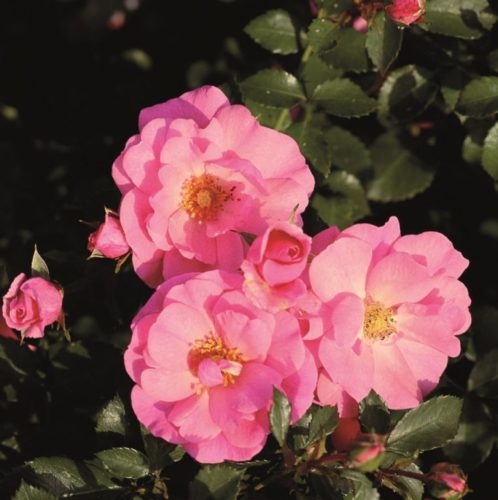




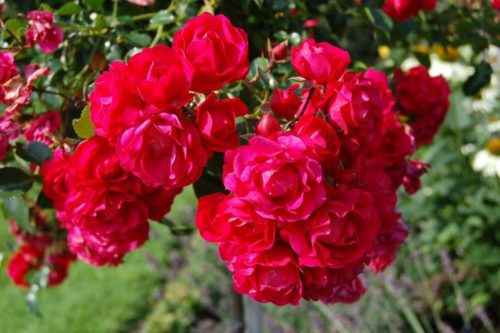
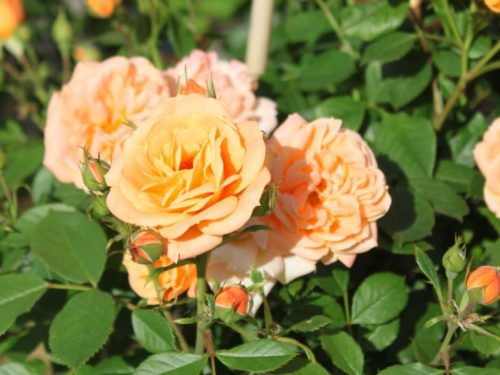
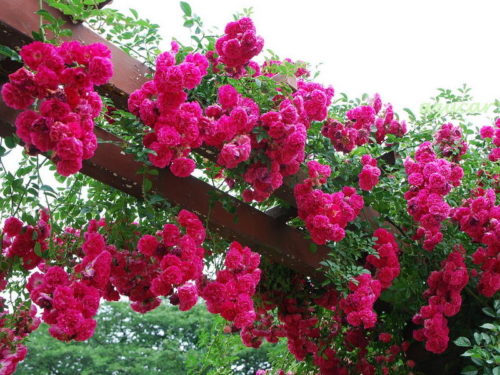

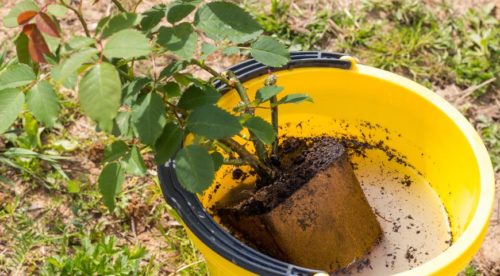
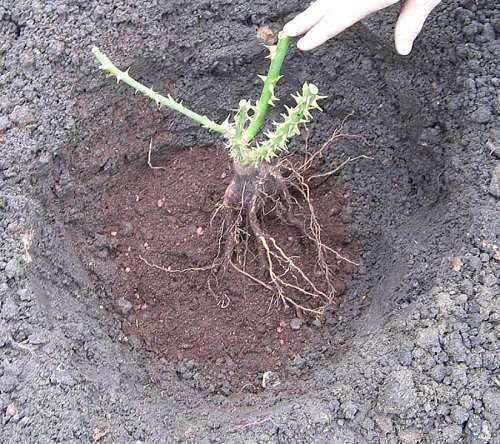
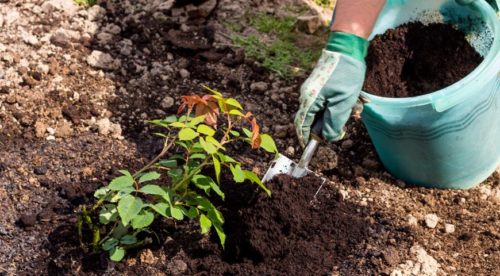

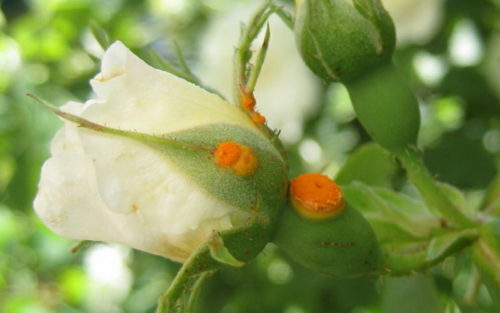

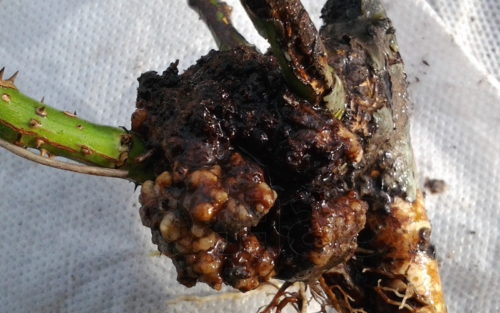
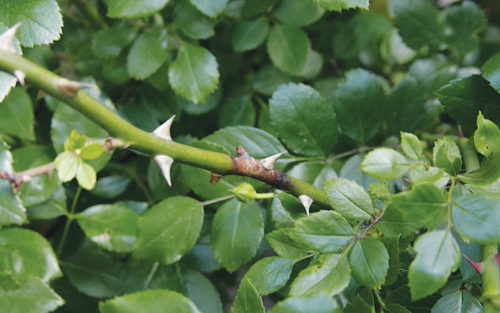
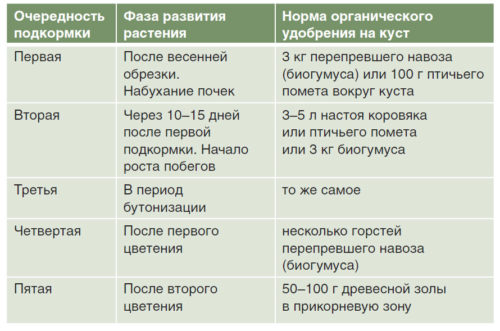












 Start a discussion ...
Start a discussion ...